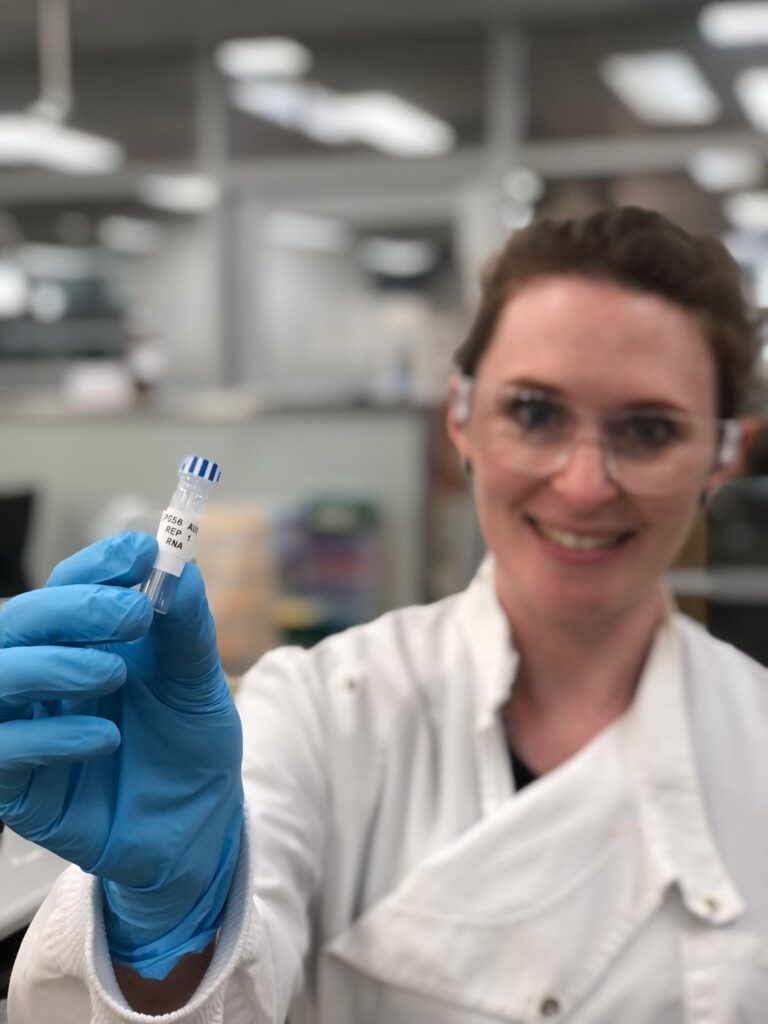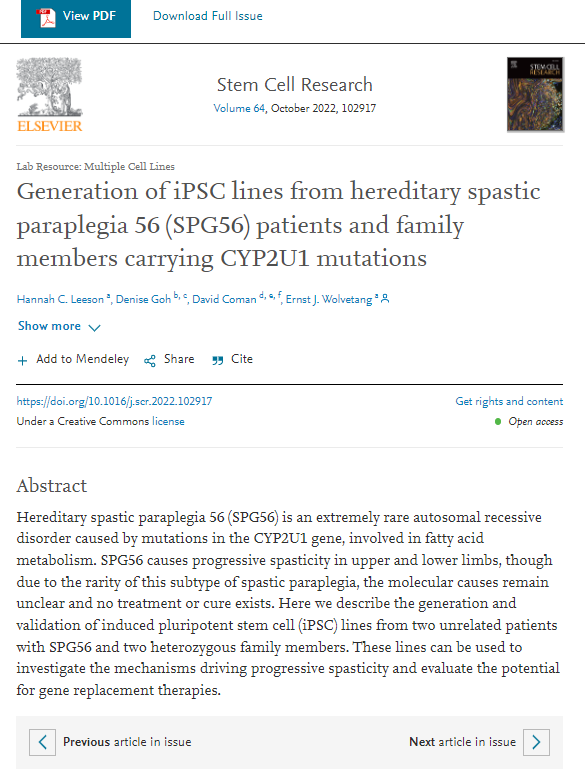The first scientific publication about SPG56 stem cell research funded by Genetic Cures for Kids has gone live, published by our dedicated researchers Dr Hannah Leeson and Prof Ernst Wolvetang from Australian Institute for Bioengineering and Nanotechnology (AIBN).
The article explains in detail how the AIBN is using not only our family’s blood samples, but also the blood samples of other SPG56 families, to create induced pluripotent stem cells that are used to grow brain organoids- aka mini-brains.
Current status on disease phenotyping
The mini-brains detailed in the article (as well as neuron-only 2D cultures) grown from SPG56 induced pluripotent stem cells are used to help our researchers identify what drives the disease progression, and hence how to best treat the disease with drug and gene therapies we develop.
Dr Hannah Leeson said the brain organoids and neuron cultures that she’s grown at AIBN from SPG56 patients are well formed, and from them she’s prepared RNA samples for sequencing. This means they will be able to get really solid information about what biological processes they should be targeting inside the diseased cells.
To do this, we are working with biotech partner Novogene in Singapore, where sequencing is cost effective and faster. Previously, transporting something as delicate as RNA was incredibly difficult and expensive. However, Novogene has developed these fantastic little tubes with a gel in them.
Dr Leeson explained it in layman’s terms for us: “You just put in your RNA, put it inside a vacuum to dry out all the water, then your RNA is protected inside the gel and you can post the tubes at room temp with normal registered post. Game changer!” she said. Game changer, indeed. Dr Leeson received the shipment tubes and has now posted these delicate RNA samples safely by registered post to Singapore.

GC4K will continue to keep you updated as more results come in for Our Moon’s Mission: to cure SPG56. While Dr Alex Cristino and team at Griffith Institute of Drug Discovery (GRIDD) have been busy analysing sequencing data from the hONS cells (nasal stem cells that were harvested from two SPG56 patients), this next body of information from our brain organoids will mean AIBN and GRIDD have two data sets on SPG56 cells that can be compared and contrasted.
This is a really exciting time for the mission; a point in history where we will significantly build on vital knowledge of this rare disease and help scientists and researchers around the world to better understand, and find treatments for, SPG56 patients. Please share our story and support our mission. Every effort is deeply appreciated and steps us closer to a cure.


